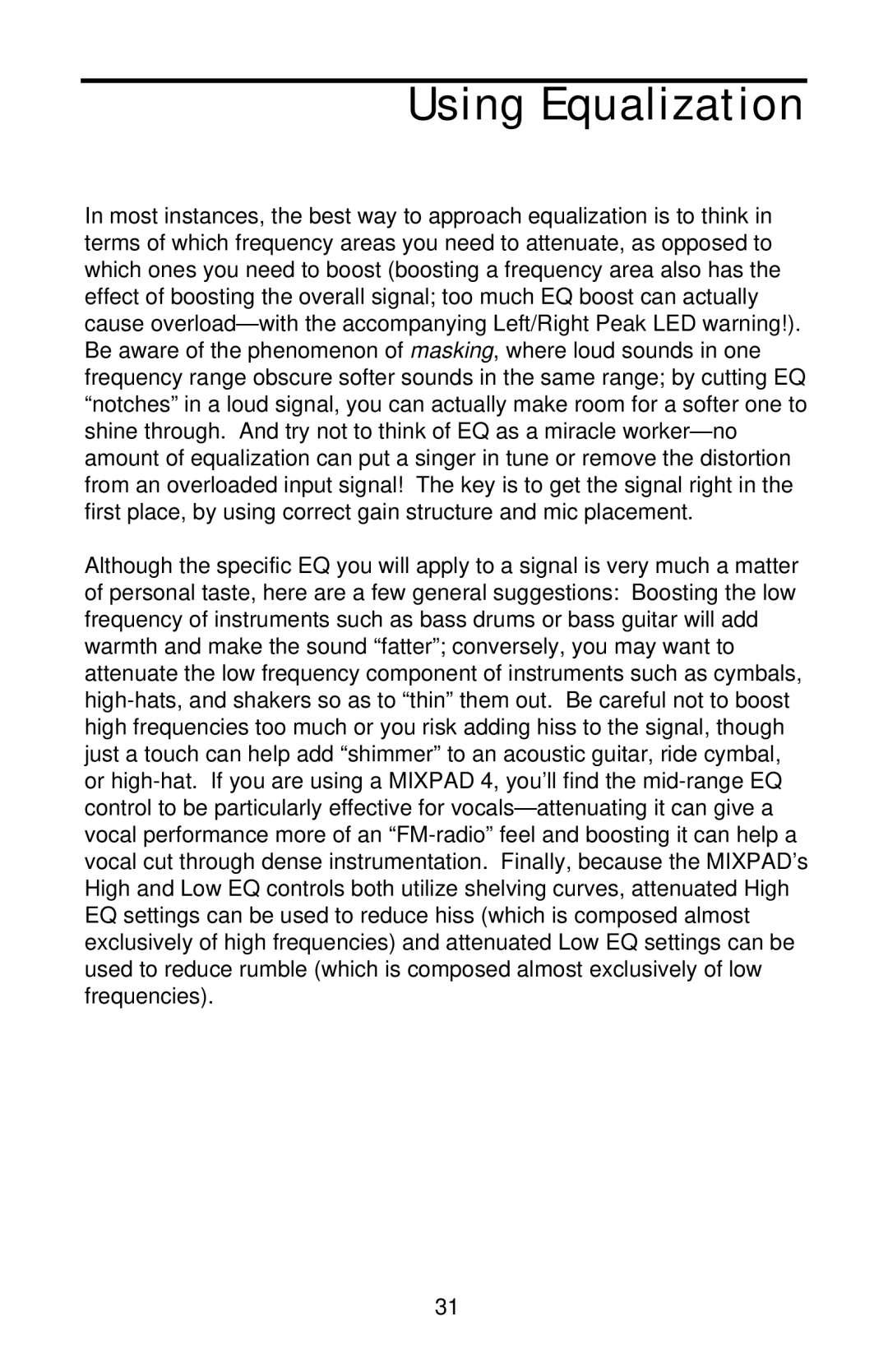
Using Equalization
In most instances, the best way to approach equalization is to think in terms of which frequency areas you need to attenuate, as opposed to which ones you need to boost (boosting a frequency area also has the effect of boosting the overall signal; too much EQ boost can actually cause overload—with the accompanying Left/Right Peak LED warning!). Be aware of the phenomenon of masking, where loud sounds in one frequency range obscure softer sounds in the same range; by cutting EQ “notches” in a loud signal, you can actually make room for a softer one to shine through. And try not to think of EQ as a miracle worker—no amount of equalization can put a singer in tune or remove the distortion from an overloaded input signal! The key is to get the signal right in the first place, by using correct gain structure and mic placement.
Although the specific EQ you will apply to a signal is very much a matter of personal taste, here are a few general suggestions: Boosting the low frequency of instruments such as bass drums or bass guitar will add warmth and make the sound “fatter”; conversely, you may want to attenuate the low frequency component of instruments such as cymbals, high-hats, and shakers so as to “thin” them out. Be careful not to boost high frequencies too much or you risk adding hiss to the signal, though just a touch can help add “shimmer” to an acoustic guitar, ride cymbal, or high-hat. If you are using a MIXPAD 4, you’ll find the mid-range EQ control to be particularly effective for vocals—attenuating it can give a vocal performance more of an “FM-radio” feel and boosting it can help a vocal cut through dense instrumentation. Finally, because the MIXPAD’s High and Low EQ controls both utilize shelving curves, attenuated High EQ settings can be used to reduce hiss (which is composed almost exclusively of high frequencies) and attenuated Low EQ settings can be used to reduce rumble (which is composed almost exclusively of low frequencies).
